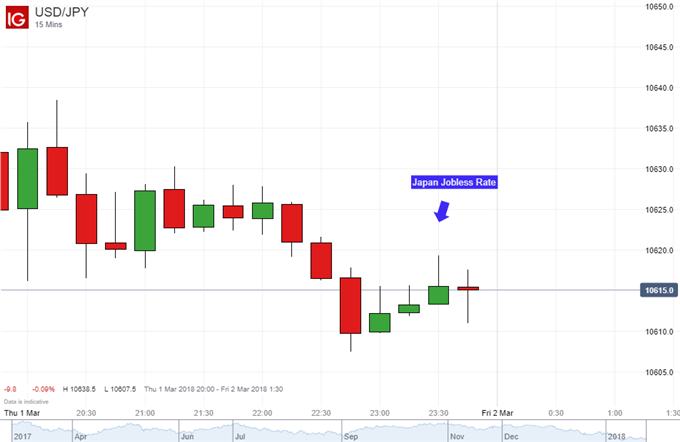Talking Points:
- Japan’s jobless rate at 2.4% versus 2.8% expected, lowest in almost 25 years
- However, Finance Minister Taro Aso mentioned that there is a labor shortage
- With BoJ committed to easing regardless, the Yen looks sensitive to risk trends
Just started trading USD/JPY? Check out our beginners’ FX markets guide !
The Japanese Yen failed to show any excitement for a local unemployment report that showed the jobless rate falling to its lowest point since April 1993, almost 25 years ago. Japan’s unemployment rate was 2.4% in January, decimating the 2.8% expected outcome which would have been an increase from December’s 2.7% rate.
Meanwhile the labor force participation rate and the job-to-applicant ratio remained the same at 60.5% and 1.59 respectfully. Economists were calling for the latter to tick higher to 1.60 instead. Shortly after the data crossed the wires, Japan’s Finance Minister Taro Aso said that “it is clear that there is a labor shortage in Japan”.
While that may be true, the Bank of Japan is already deep into a stimulus program with negative rates and yield curve control. The central bank’s main focus at the moment is bringing inflation closer to its two percent target. In fact, just yesterday BoJ’s Governor Haruhiko Kuroda stressed that “easing won’t continue if CPI is 2% in a stable manner”.
With that in mind, the anti-risk Japanese Yen will probably continue closely tracking global stock markets. On Thursday, the currency strengthened against its US counterpart as stocks fell when President Donald Trump announced import tariffs on steel and aluminum.

On a daily chart, USD/JPY seems to be wedged in-between a long-term rising trend line from June 2016 and a near-term descending line. The pair has been in a downtrend since early January and what happens over the next few days might tell is if it wants to keep going or change course.
From here, the 23.6% Fibonacci extension at 105.05 stands in the way as immediate support. A push below that will expose the rising trend line. On the other hand, if USD/JPY turns higher, the 14.6% minor level at 106.76 appears to be immediate resistance. A push above that exposes the near-term descending line.







